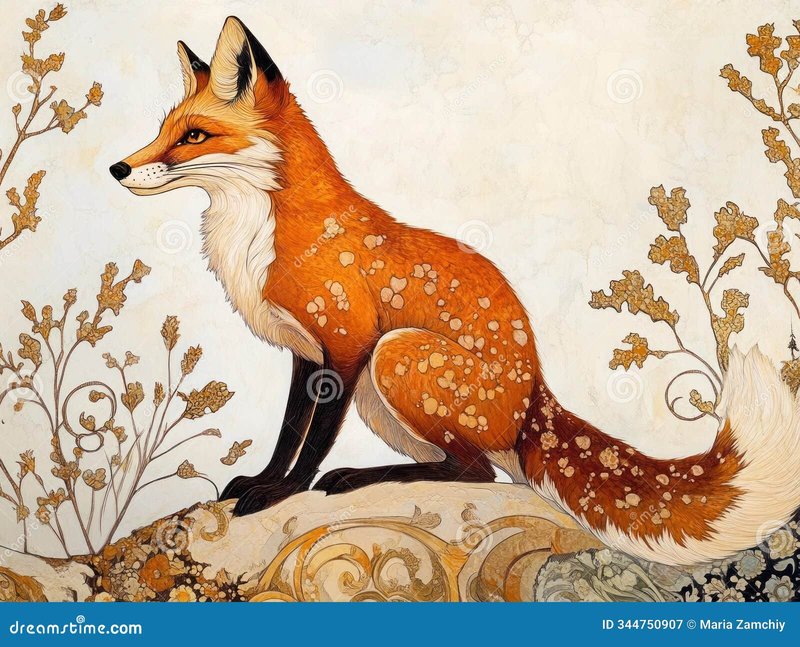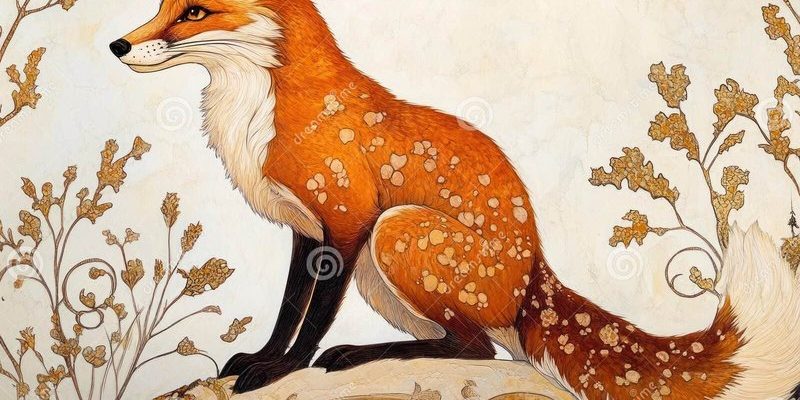
Throughout history, the red fox has appeared in diverse narratives, from ancient mythology to modern literature. Each representation reflects the values and beliefs of the culture it comes from, demonstrating how the natural world influences human creativity. Here, we’ll explore how the red fox is depicted in different cultures and what these stories tell us about our perceptions of this fascinating creature.
Red Fox in Ancient Mythology
In many ancient cultures, the red fox was seen as a mystical creature. For instance, in Norse mythology, the fox is often associated with the god of mischief, Loki. Much like Loki himself, foxes are viewed as clever and deceptive. This connection highlights the theme of cunning that runs through many fox tales. The fox’s ability to slip away unnoticed, much like a trickster escaping a tricky situation, becomes a fascinating metaphor for intelligence and survival.
Similarly, in Japanese folklore, the fox, or kitsune, is revered as a spirit or deity. Kitsune are thought to have magical powers, including shapeshifting abilities, often transforming into beautiful women. This transformation is often seen as a representation of the duality of nature—how something can appear harmless while holding deeper knowledge and power. The red fox’s presence in these myths emphasizes its role as a creature that straddles the line between the natural and the supernatural.
Folktales Featuring The Red Fox
Folktales are rich with stories about the clever red fox. One classic example is “The Fox and the Grapes,” a fable by Aesop. In this tale, a hungry fox sees a bunch of grapes hanging high on a vine but can’t reach them. Frustrated, he walks away, declaring the grapes were sour anyway. This story teaches a valuable lesson about rationalizing failure, showing how cleverness can sometimes mask disappointment. Here, the fox becomes a mirror of human behavior, representing our tendency to dismiss what we cannot obtain.
Another popular folktale is the “Brer Fox” stories from African American folklore, where the cunning fox often outsmarts his rivals, particularly Brer Rabbit. In these tales, Brer Fox is depicted as clever yet often outsmarted himself, showcasing how intelligence can sometimes backfire. These stories celebrate the underdog, using the fox’s wit to highlight the importance of cunning and resourcefulness in overcoming adversities.
The Red Fox in Literature and Art
Red foxes have made their way into various works of literature and visual art, often symbolizing different themes based on the context. In children’s literature, foxes frequently embody traits of curiosity and adventure. Books like “Fantastic Mr. Fox” by Roald Dahl present the fox as a brave hero, fighting against oppression and celebrating cleverness. Here, the narrative flips the notion of the fox as a mere trickster to a figure of resilience and determination.
In visual art, the red fox has been a popular subject, often portraying its graceful movement and stunning coloration. Artists have used the fox to symbolize different qualities; for example, in Native American art, the fox can represent adaptability and cleverness, embodying the spirit of survival. Each depiction invites viewers to explore the deeper meanings and connections humans have with this enchanting animal.
Symbolism of the Red Fox
The red fox’s symbolism varies widely across cultures, embodying different qualities that resonate with people. In many Western cultures, the fox is often seen as a symbol of cunning and trickery. This association might stem from its behavior in the wild, where the fox’s ability to evade predators and hunt efficiently speaks to its cleverness. People often relate this cunning to human traits, making the red fox a metaphor for intelligence and strategy.
Conversely, in some cultures, the fox embodies wisdom and insight. In Celtic traditions, for example, the red fox is seen as a guide through the unknown, offering spiritual wisdom and insight. Its nighttime activity connects it with the spiritual realm, often symbolizing the journey between different worlds. This representation highlights how cultural perspectives can shift based on societal values and beliefs.
The Red Fox in Modern Media
Today, the red fox continues to be a popular figure in modern media. Whether it’s in animated films, video games, or social media, the fox’s clever nature and striking appearance make it a favorite character. Movies like “Zootopia” use the fox to address themes of prejudice and overcoming stereotypes, portraying the character in a more complex light. This modern portrayal encourages audiences to rethink preconceived notions about these animals and, by extension, about one another.
Additionally, the fox features prominently in video games, often represented as a curious, agile character. In games like “The Legend of Zelda,” fox-like creatures often assist the hero on their journey, emphasizing themes of friendship and loyalty. These representations show how the red fox has evolved from traditional folklore into a more relatable figure for contemporary audiences.
The red fox has woven itself into the fabric of human storytelling and culture, serving as a symbol of cleverness, adaptability, and mystery. From ancient mythology to modern media, these representations highlight the complexity of our relationship with nature and the values we assign to different creatures.
As we continue to share stories of the red fox, they remind us of our shared human experiences, inviting us to reflect on themes of cunning, resilience, and wisdom. Next time you spot a fox in the wild, take a moment to consider the rich tapestry of legends and tales that have formed around this remarkable animal. Its legacy is not just in the tales we tell, but in our understanding of the world around us.

